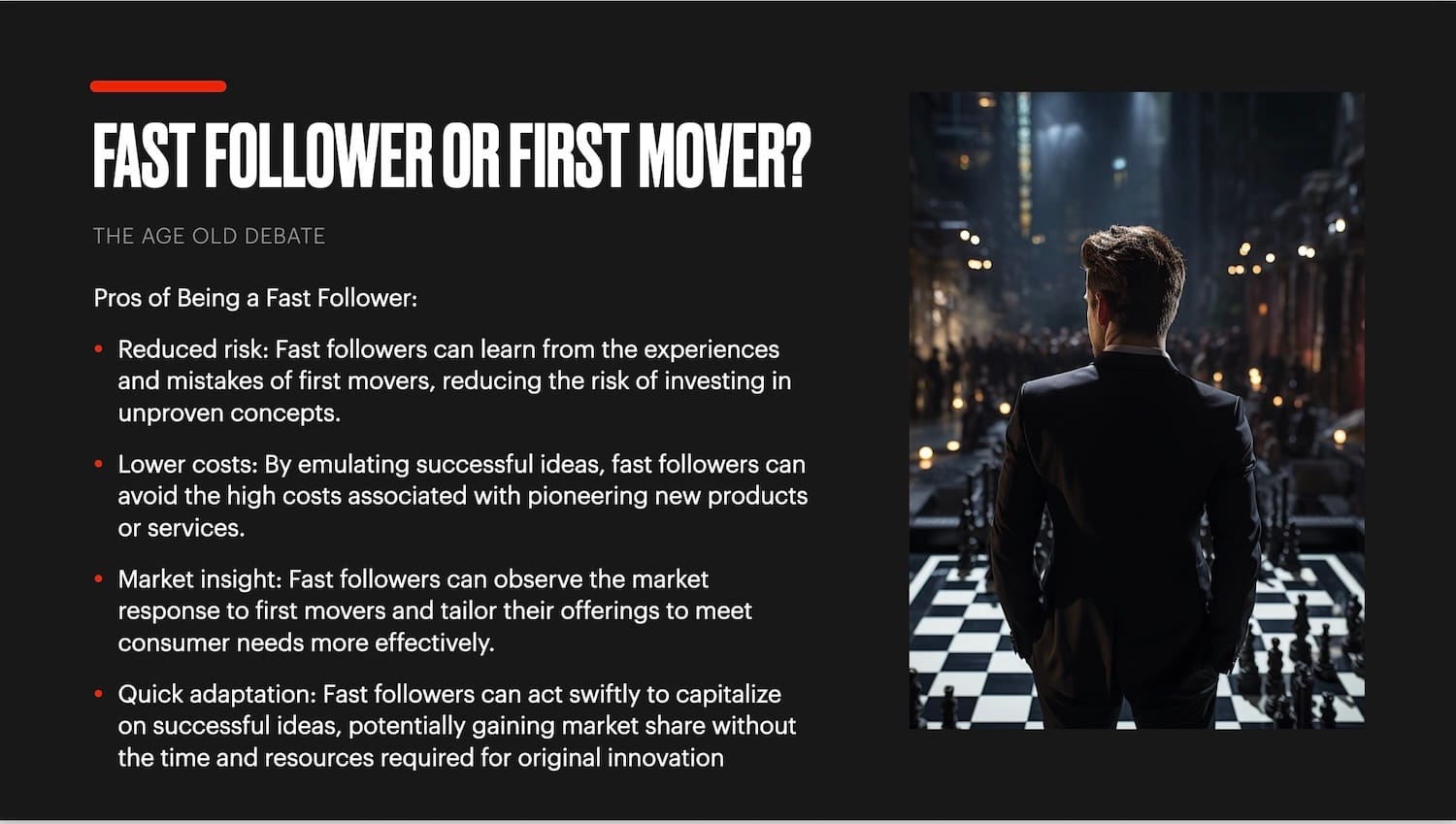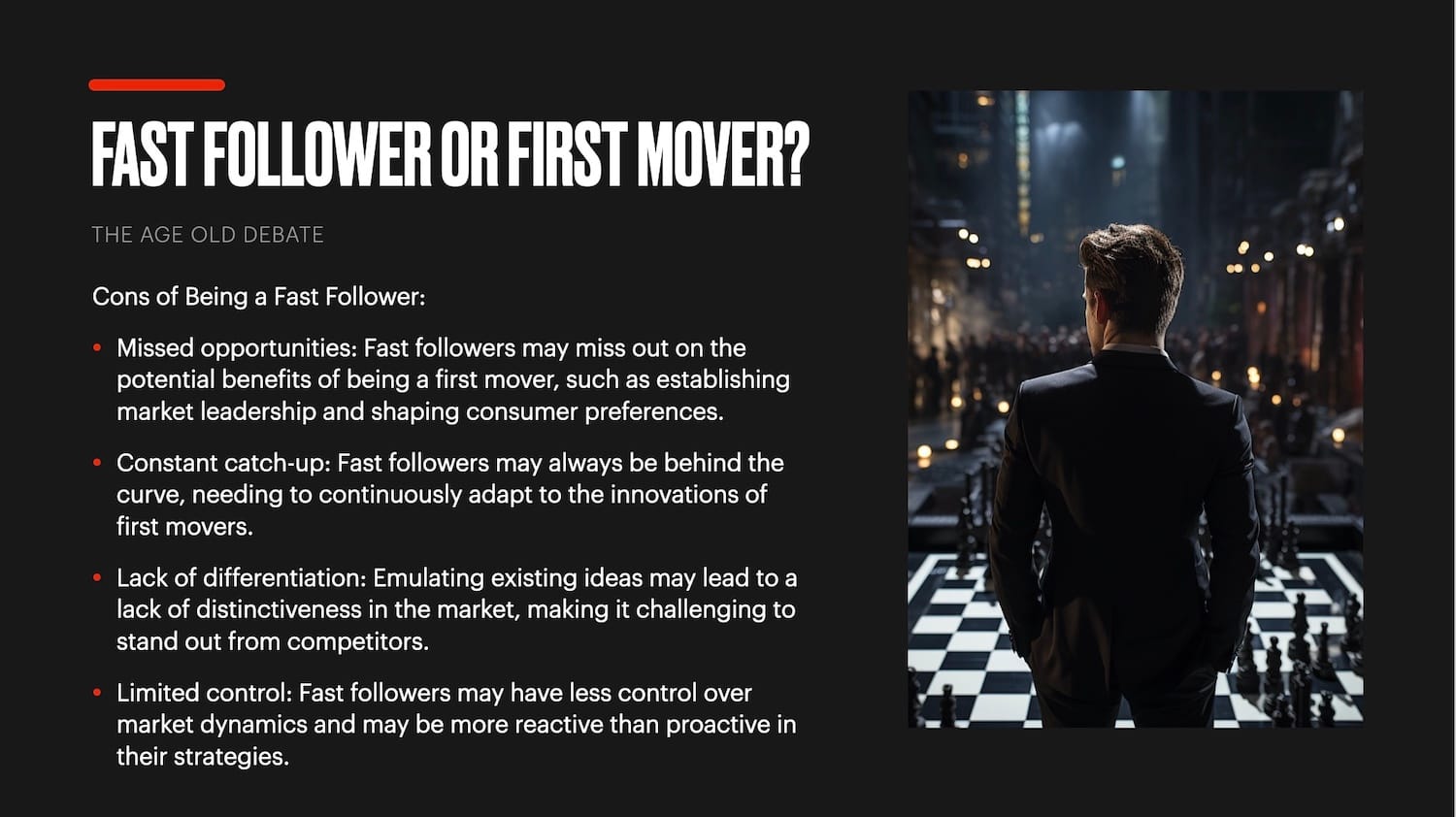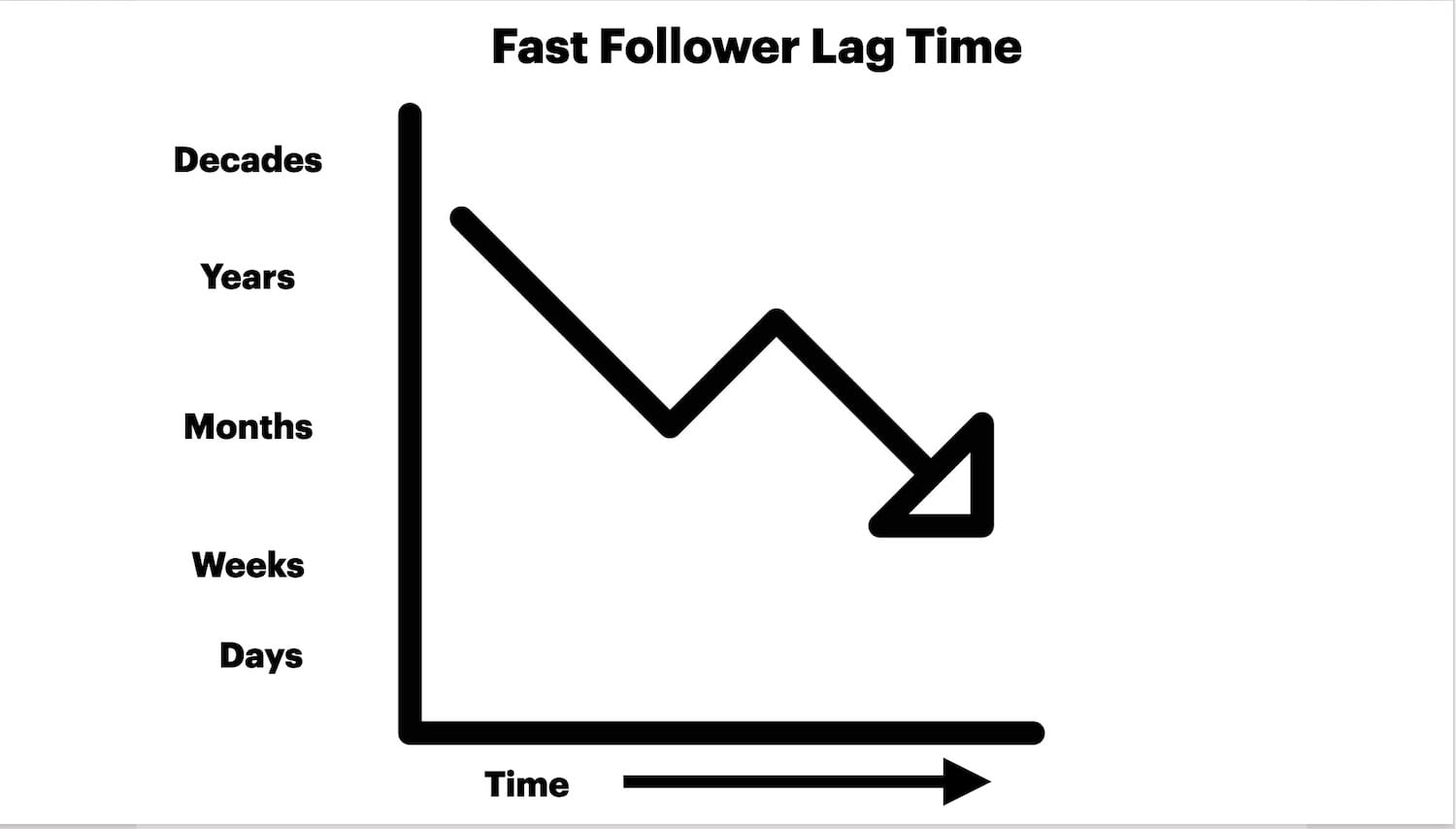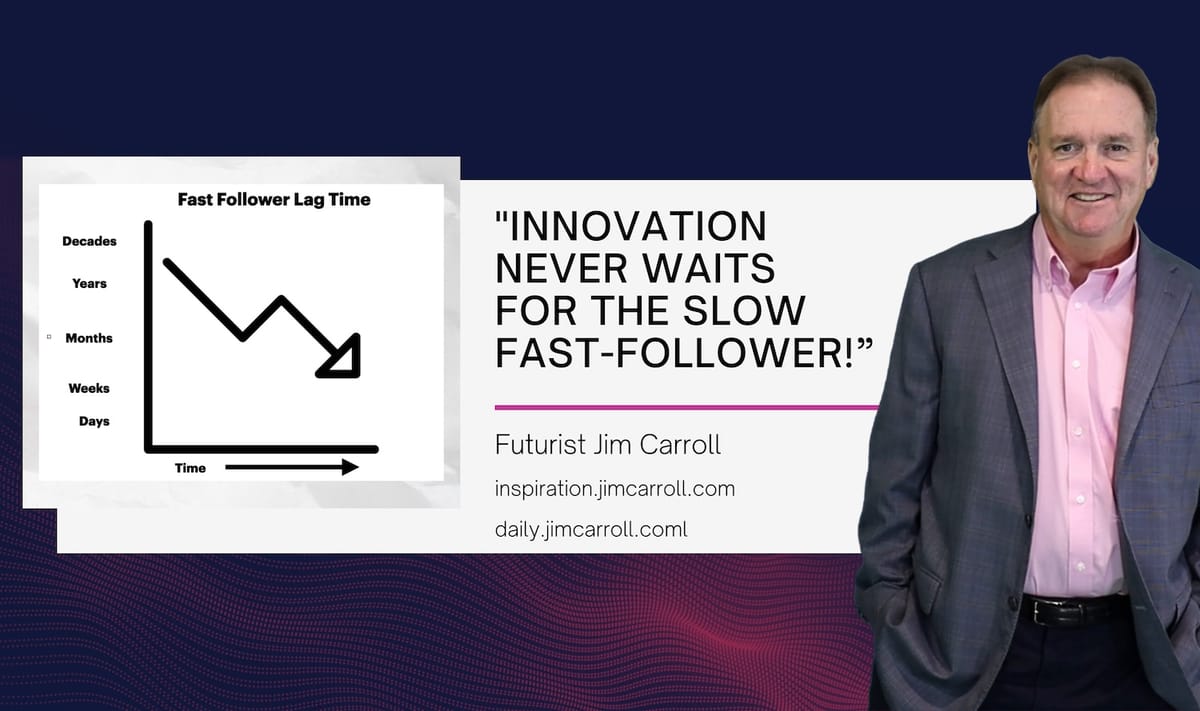"Innovation never waits for the slow fast-follower!” - Futurist Jim Carroll
I put together an interesting set of slides about the conundrum that organizations now face in the era of accelerating AI trends.
For a long time, when it comes to new disruptive technologies and business models, organizations have had to decide whether they will be a 'first mover' (or 'market leader') or a 'fast follower.' The former will charge ahead, doing everything they can to try to define and own a new market or industry before others catch up; the latter adopts a strategy that involves studying and following the leader -- and adapting to their mistakes and successes to eventually overcome them.
There are certainly benefits to being a fast follower:
- Reduced risk: Fast followers can learn from the experiences and mistakes of first movers, reducing the risk of investing in unproven concepts.
- Lower costs: By emulating successful ideas, fast followers can avoid the high costs associated with pioneering new products or services.
- Market insight: Fast followers can observe the market response to first movers and tailor their offerings to meet consumer needs more effectively.
- Quick adaptation: Fast followers can act swiftly to capitalize on successful ideas, potentially gaining market share without the time and resources required for original innovation

And yet, there is a downside, including:
- Missed opportunities: Fast followers may miss out on the potential benefits of being a first mover, such as establishing market leadership and shaping consumer preferences.
The need for a constant catch-up strategy: Fast followers may always be behind the curve, needing to continuously adapt to the innovations of first movers. - Lack of differentiation: Emulating existing ideas may lead to a lack of distinctiveness in the market, making it challenging to stand out from competitors.
- Limited control: Fast followers may have less control over market dynamics and may be more reactive than proactive in their strategies.

It's long been debated as to which strategy makes ultimate sense, but one thing that seems clear to me is that the period to be a fast follower is shrinking. It's seen in the graph - the time available to be a 'fast follower' is collapsing as time speeds up and the era of acceleration takes hold. Markets, industries, and new products or services used to take years to appear and evolve so the time available to a 'fast follower' was abundant; but now, with fast-moving technologies, the available period for a fast follower to study and learn from the first-mover is shrinking.
This might mean there is less of a benefit to adopting a fast-follower strategy.
Does that make sense? Organizations need to be thinking about this, given how fast change is now happening. companies used to have the luxury of time to weigh the pros and cons of a fast-follower strategy - but in an era in which there is less time left to study the first movers, the benefit of trying to be a fast-follower might completely disappear!

In effect, we might be seeing the end of the fast-follower concept.
You either get into a new disruptive ideas quickly - or don't bother at all!
Futurist Jim Carroll gets into the intricacies of business strategies on occasion, when he is faced with a unique conundrum presented to him by a client. This is one of those times.

